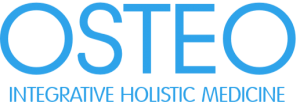Call Today:
Monday through Friday
First Appointment: 10:00am
Last Appointment: 4:00pm
Manual Therapy
Manual therapy is a non-invasive approach to restoring and maintaining the body’s equilibrium. It fosters the natural propensity for balance and self-healing. Its longevity attests to its relevance and effectiveness: it is among the world’s earliest forms of therapeutic treatment, evidenced in numerous cultures and dating back over 3,000 years. Today, Osteo Holistic Healthcare clients experience the time-tested benefits in a modern setting, prioritizing their individual needs and targets.
Osteo Holistic Healthcare offers a fully integrated approach to treatment. While it’s easy to find skilled practitioners of any one approach, Zahir’s extensive training and experience enable him to customize your treatment to your specific situation – incorporating elements of multiple modalities and adapting them to your body’s unique requirements.
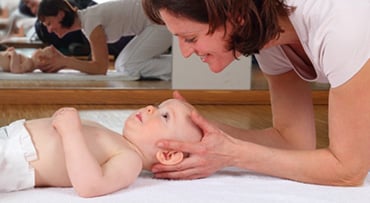 Craniosacral Therapy
Craniosacral Therapy
CST uses gentle pressure and manipulation to assess and address imbalances in the craniosacral system (spine, skull and its cranial sutures, diaphragms and reciprocal tension membranes). It aims to correct misalignments and ease restrictions in this system, as well as improving blood circulation and enhancing movement of cerebrospinal fluid through the spinal cord.
CST compliments the body’s natural self-healing tendencies, and is increasingly used in preventive healthcare.
CST was pioneered by physician William Sutherland, DO, who studied under Andrew Taylor Still, the founder of osteopathy. Its current leading proponents are Viola Frymann, DO, and John E. Upledger, DO. Zahir has completed coursework with both.
 Neuromuscular Therapy
Neuromuscular Therapy
NMT aims to restore balance between the nervous and the musculoskeletal systems, as well as releasing spasms/contractions in tissue. It uses varying degrees of static or quasi-static pressure on soft tissue (tendons, muscles, connective tissue) to ease tension and reduce pain. The American Academy of Pain Management has recognized NMT as an effective treatment for back pain caused by soft tissue injury (such as muscle strain).
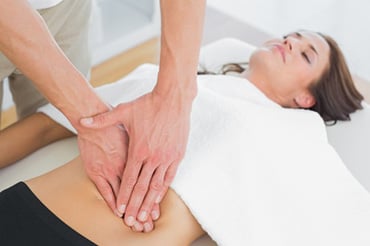 Visceral Therapy
Visceral Therapy
Visceral therapy strives to restore harmony between the body’s organs (viscera) and its structures (muscles, membranes, fascia, bones) by applying focused but gentle manual force to encourage healthy mobility, tone, and motion of the viscera and their connective tissues.
Visceral therapy/manipulation has been advanced by French osteopath Jean-Pierre Barral, though the roots of this approach have long been part of medicinal cultures in Europe and Asia.
Dr. Barral is the founder of the US-based Barral Institute and was named “one of the Top Healing Innovators to watch in the new millennium” by Time Magazine. Zahir studied directly under Dr. Barral in France.
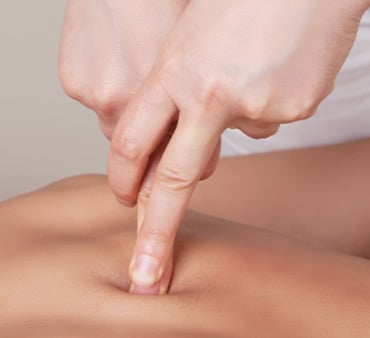 Trigger Point Therapy
Trigger Point Therapy
Trigger points are knots, or nodules, located in taut bands of skeletal muscle fibers, which – when compressed – can create both local and referred (non-local) pain.
This can result from muscular injury or overwork. Trigger point therapy uses the gentle application of pressure to these hyper-irritable spots, to relieve spasms/contractions. It can be effective in helping treat chronic musculoskeletal conditions.
 Myofascial Release
Myofascial Release
The term ‘myofascial’ refers to the body’s muscles (myo) and the connective tissue that covers and binds the body’s skeletal, visceral, muscular, nervous, and vascular systems (fascia).
Because the fascia is a single unit, present throughout the body, an imbalance or tension in one area – due to injury, inflammation, trauma or poor posture – can manifest itself in symptoms elsewhere.
By applying pressure to stressed areas of the fascia, a therapist employing myofascial release aims to minimize restrictions, ease pain, restore mobility/flexibility, and enable the system to regain full functionality in supporting the body.
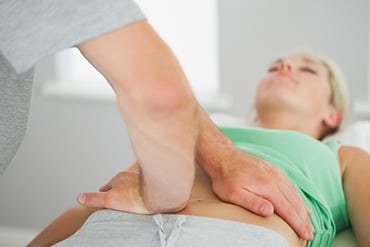 Myoskeletal Alignment
Myoskeletal Alignment
This process is about restoring the muscles to their natural alignment with the skeleton – with particular attention to the spine. Lack of alignment can lead to discomfort, pain, and/or restricted movement.
Integrating osteopathic principles, myoskeletal alignment aims to restore proper structural functioning, with a focus on relieving back and neck pain. By lengthening tight muscles, tension is released and freedom of movement is increased; simultaneously, weak muscles are gently stretched and worked, helping boost their support capacity.
 Joint Mobilization
Joint Mobilization
The objective of joint mobilization is achieving the full range of motion (ROM) of a skeletal joint. It can also be used to help alleviate pain due to joint compression.
It involves passive movement (on the part of the client) at varying degrees of speed and amplitude, with minimal force.
Some studies (including one conducted by Zahir, on a nationally ranked group of track and field athletes, in North Africa) have shown that expanding a joint’s ROM can help athletes boost performance.
